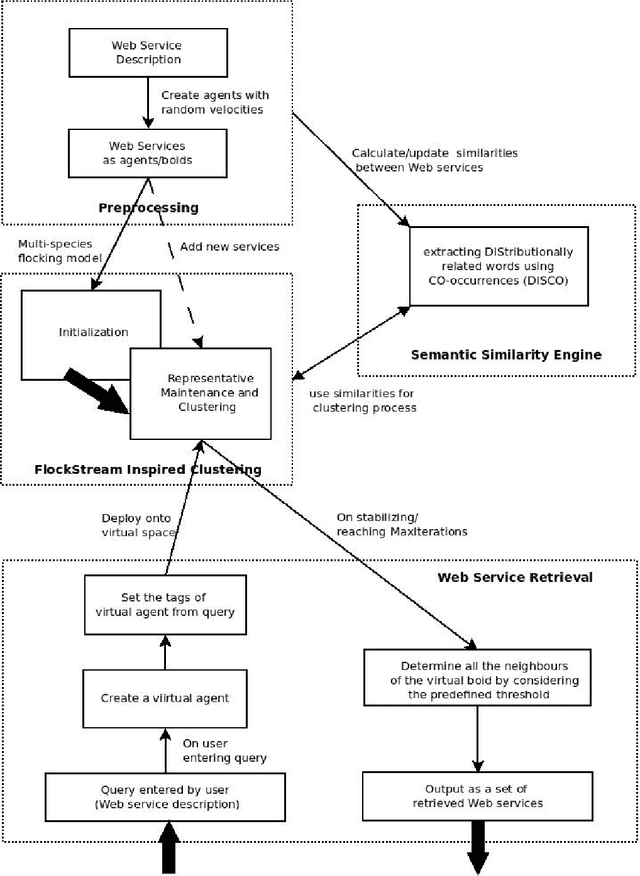Sowmya Kamath
A Framework for Web Services Retrieval Using Bio Inspired Clustering
Oct 04, 2022
Abstract:Efficiently discovering relevant Web services with respect to a specific user query has become a growing challenge owing to the incredible growth in the field of web technologies. In previous works, different clustering models have been used to address these issues. But, most of the traditional clustering techniques are computationally intensive and fail to address all the problems involved. Also, the current standards fail to incorporate the semantic relatedness of Web services during clustering and retrieval resulting in decreased performance. In this paper, we propose a framework for web services retrieval that uses a bottom-up, decentralized and self organising approach to cluster available services. It also provides online, dynamic computation of clusters thus overcoming the drawbacks of traditional clustering methods. We also use the semantic similarity between Web services for the clustering process to enhance the precision and lower the recall.
AuthNet: A Deep Learning based Authentication Mechanism using Temporal Facial Feature Movements
Dec 19, 2020



Abstract:Biometric systems based on Machine learning and Deep learning are being extensively used as authentication mechanisms in resource-constrained environments like smartphones and other small computing devices. These AI-powered facial recognition mechanisms have gained enormous popularity in recent years due to their transparent, contact-less and non-invasive nature. While they are effective to a large extent, there are ways to gain unauthorized access using photographs, masks, glasses, etc. In this paper, we propose an alternative authentication mechanism that uses both facial recognition and the unique movements of that particular face while uttering a password, that is, the temporal facial feature movements. The proposed model is not inhibited by language barriers because a user can set a password in any language. When evaluated on the standard MIRACL-VC1 dataset, the proposed model achieved an accuracy of 98.1%, underscoring its effectiveness as an effective and robust system. The proposed method is also data-efficient since the model gave good results even when trained with only 10 positive video samples. The competence of the training of the network is also demonstrated by benchmarking the proposed system against various compounded Facial recognition and Lip reading models.
 Add to Chrome
Add to Chrome Add to Firefox
Add to Firefox Add to Edge
Add to Edge